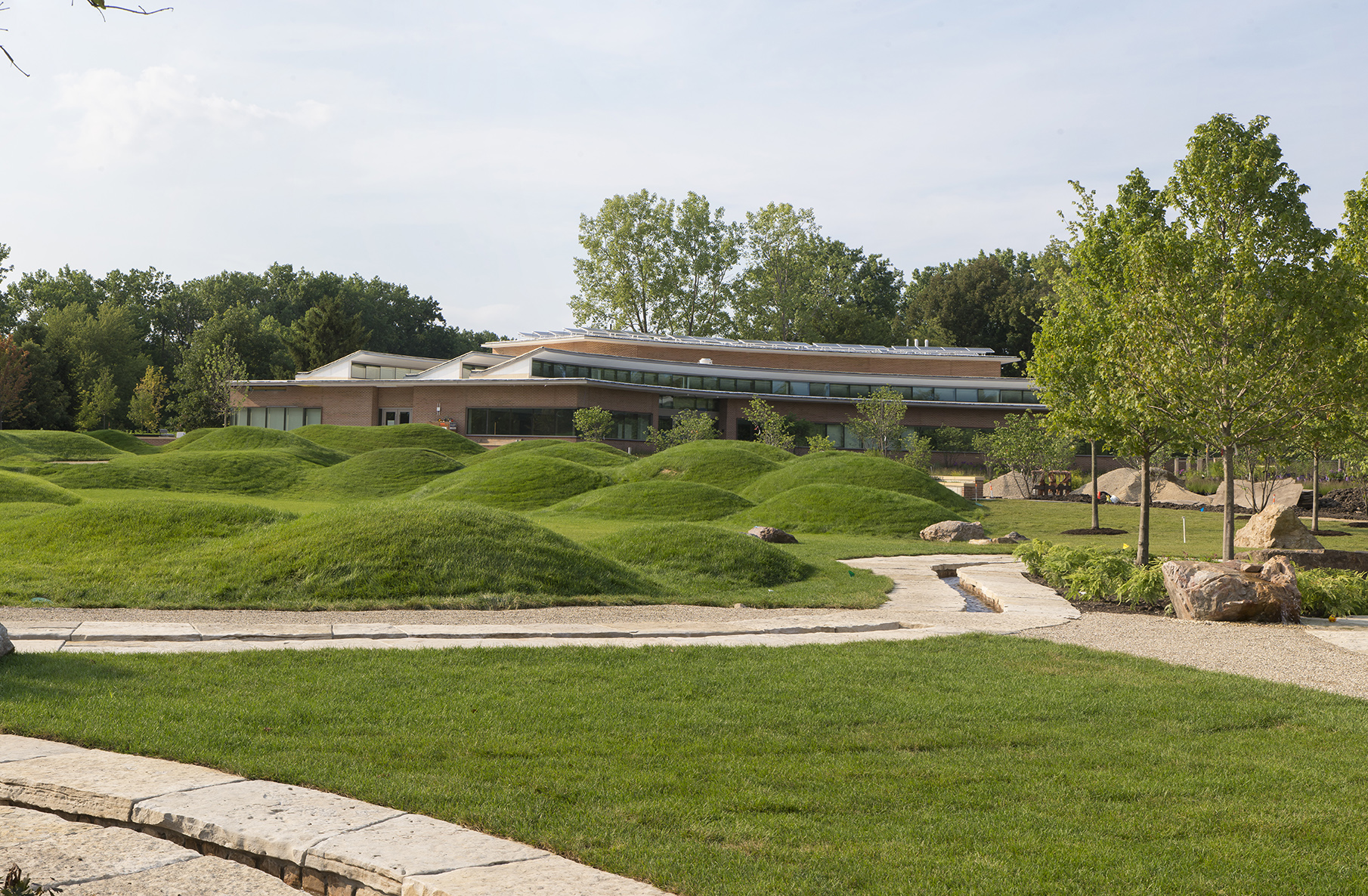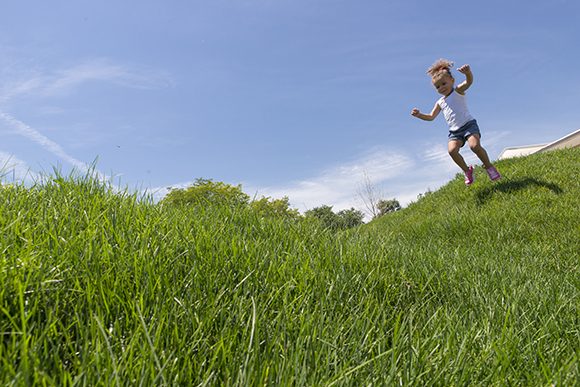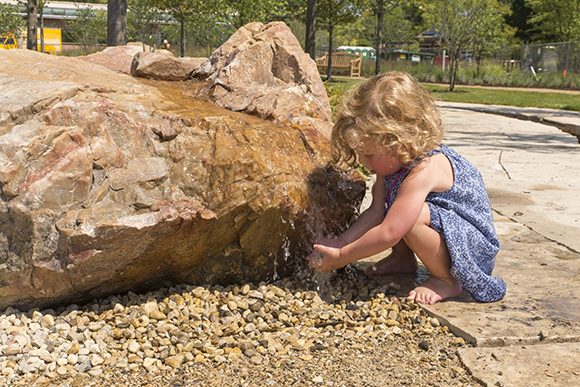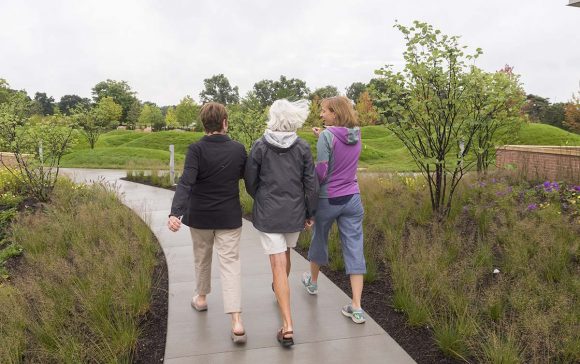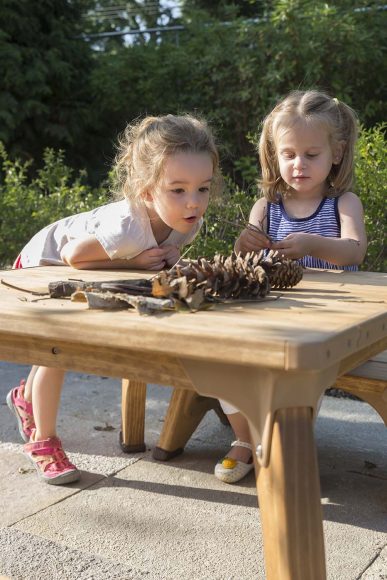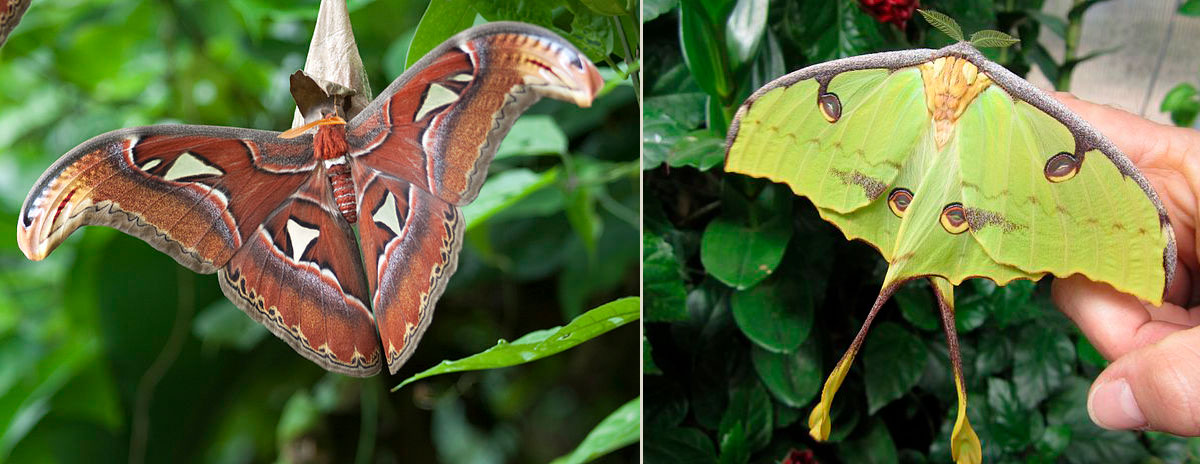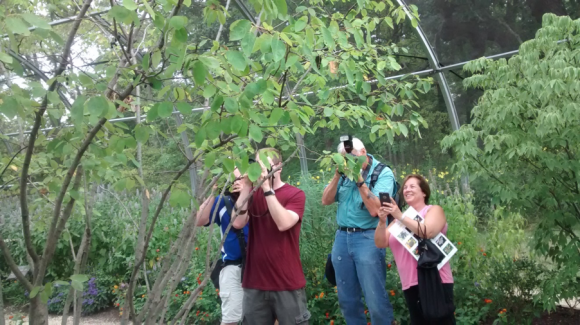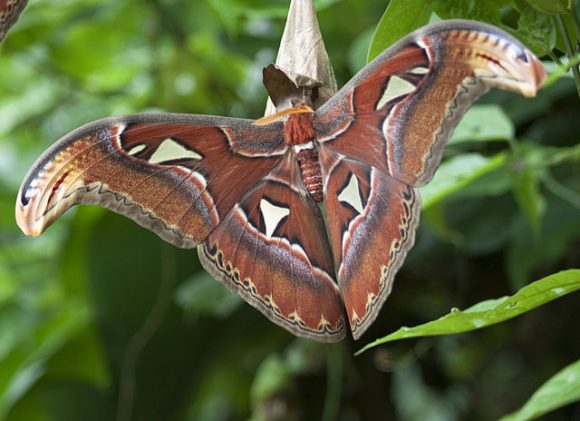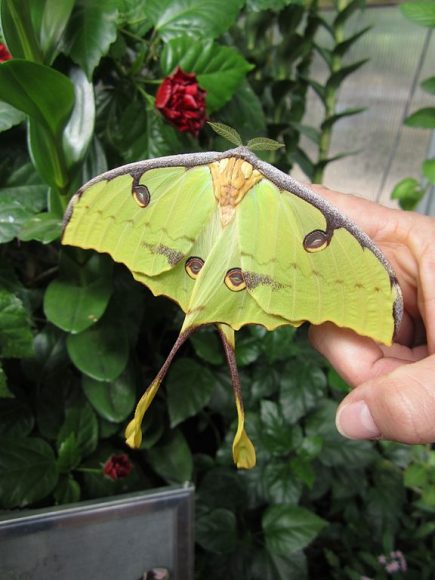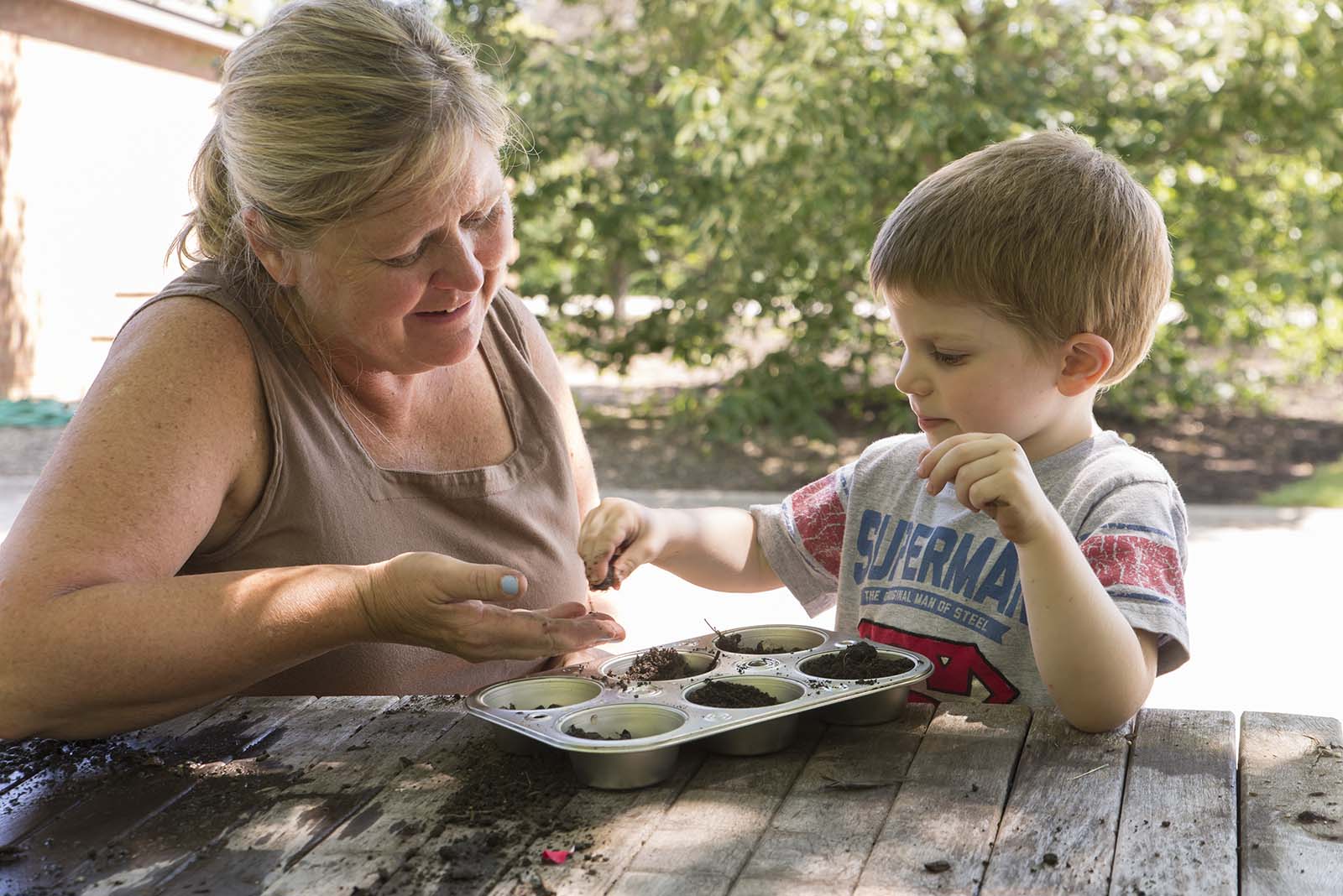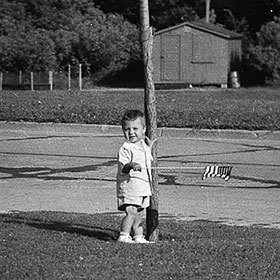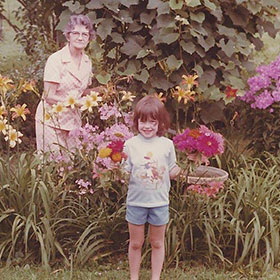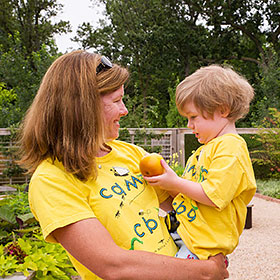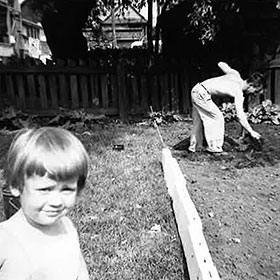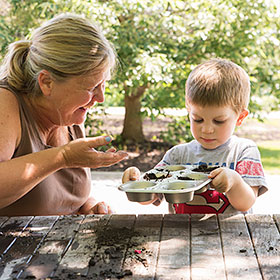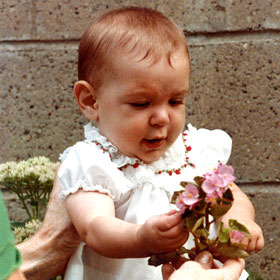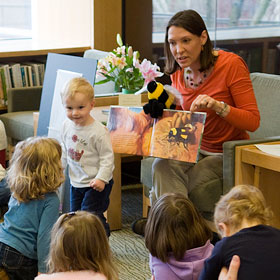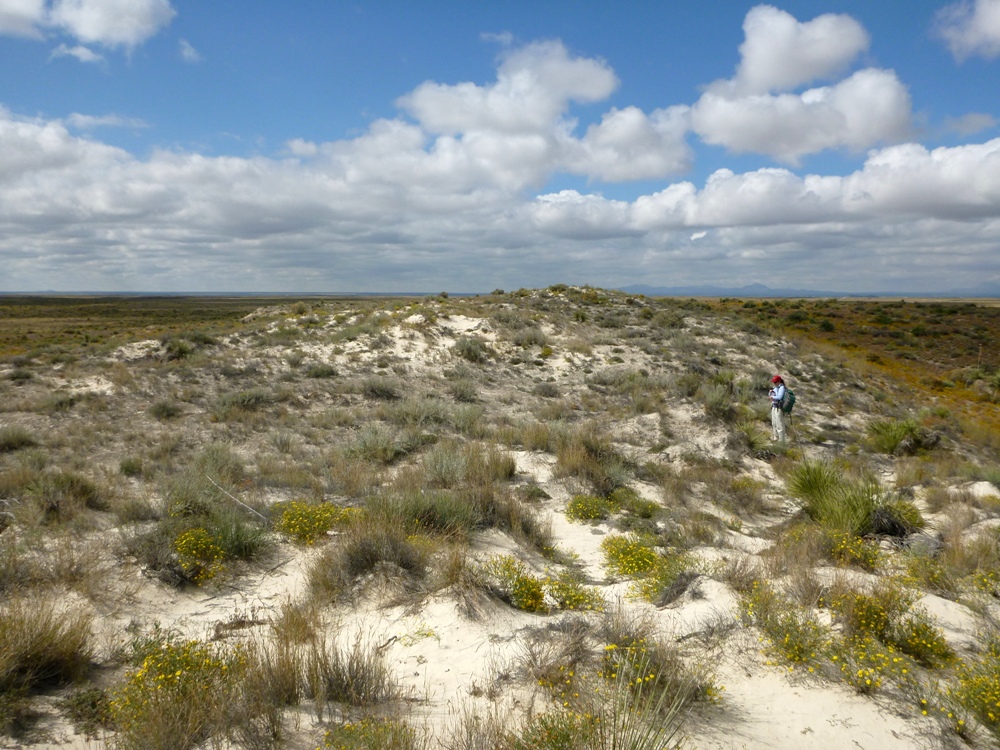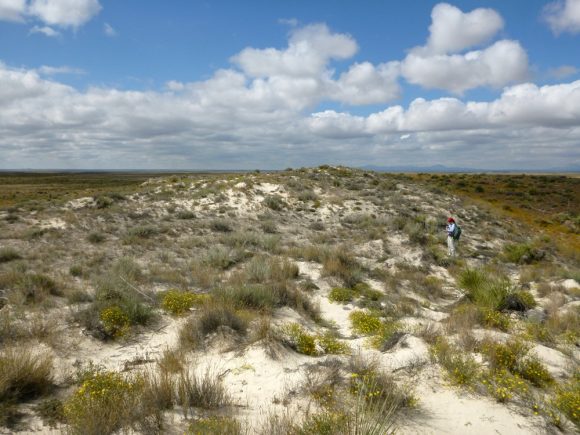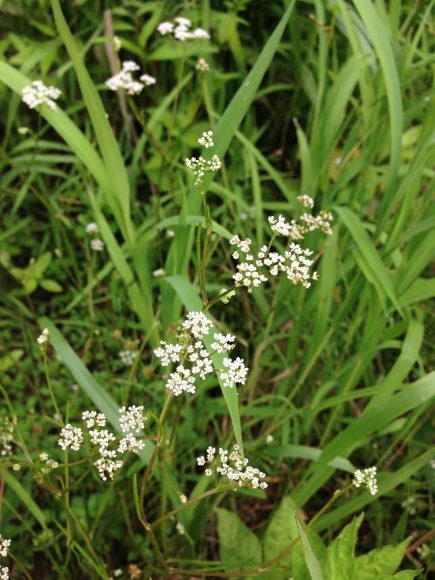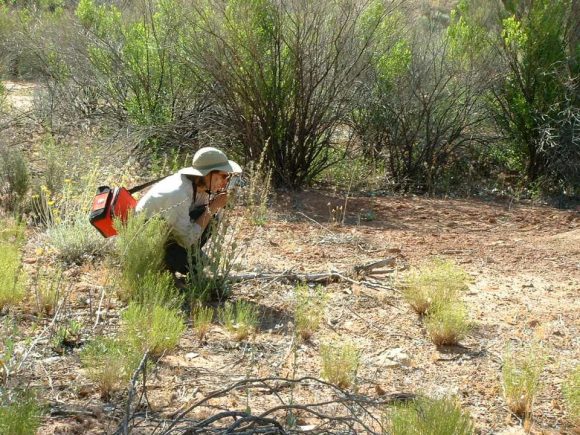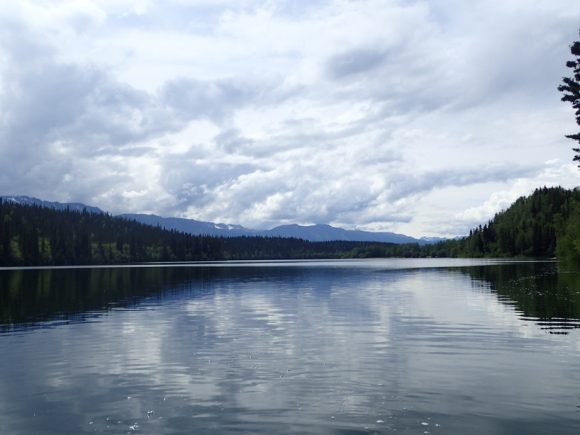Meet our new Nature Play Garden, a place of whimsy and self-discovery, for learning and fun. You will be able to dabble in the water (try the boulder bubbler) or daydream on the grassy rolling hills. Experience the new garden at the free Opening Celebration of the Regenstein Learning Campus at the Chicago Botanic Garden on September 10 and 11.
See the complete schedule for our Opening Celebration events on our website.
Horticulturists selected the garden’s flowers and trees for qualities such as color, scent, texture, and even sound (the sweet gums trees have seed pods that rattle); more than half of the perennials are new to the Chicago Botanic Garden.
“Adults will enjoy the fragrance of summer sweet and northern dropseed grass, smile at the large hibiscus flowers, be transfixed by the patterns of sunlight in the coursing water of the runnel, learn which plants do well in a swale to catch excess water runoff, and exclaim the usual ‘oh wow’ when the long sweep of redbuds flower in spring,” said Kris Jarantoski, executive vice president and director of the Chicago Botanic Garden.
The Nature Play Garden is part of the Regenstein Learning Campus, a new home base for the Chicago Botanic Garden’s plant-based, immersive nature experiences and classes. (Our last two new gardens, the Grunsfeld Children’s Growing Garden and Kleinman Family Cove, opened in 2012 as part of the initial phases of the Learning Campus.)
Here are a few of our favorite features in the new garden:
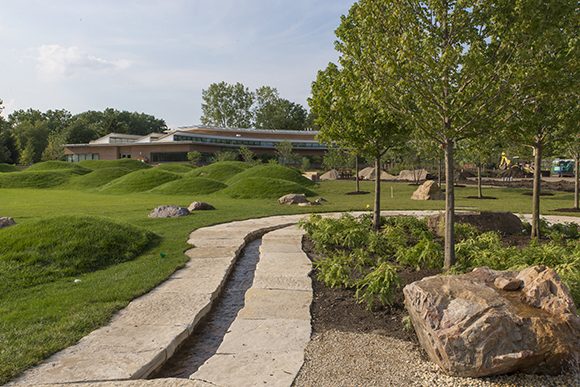
The can’t-miss view
“Probably most of all, people will marvel at the topography of the (natural) amphitheater,” Jarantoski said. “As one of our catering staff members said (and the catering staff doesn’t often comment on the gardens), ‘The landscape is so kinetic and exciting!’ Standing on top of one of the hills provides an exhilarating feeling as the landscape falls away from you to the lawn. You’ll never think of topography the same way again.”
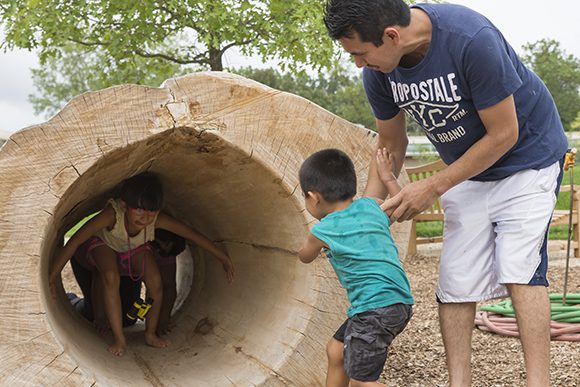
Unwind
Jump off a boulder (wood chips on the ground make for a soft landing) or hide in a hollow tulip tree log (tulip trees, Liriodendron tulipifera, are also growing in the Nature Play Garden)—experts say it’s good for you to spend time outside.
Come one, come all
The garden was designed as a vibrant gathering place, for people of all ages and abilities. Check our website for evening programs that might call for stargazing or roasting marshmallows in the fire pit. Or pack a sack lunch and people watch in the picnic grove. Don’t feel like company? Duck into the hornbeam room or another sheltering thicket of trees.
Explore the Nature Play Garden at the Learning Campus’s free Opening Celebration, September 10 and 11, 10 a.m. to 4 p.m.; parking fees apply. Enjoy live music and Family Drop-in Activities, take home a free plant, and more. Members can stop by the lounge for light refreshments and a commemorative gift. While you’re here, make time to visit any of our 26 other distinct gardens and four natural areas.
©2016 Chicago Botanic Garden and my.chicagobotanic.org

